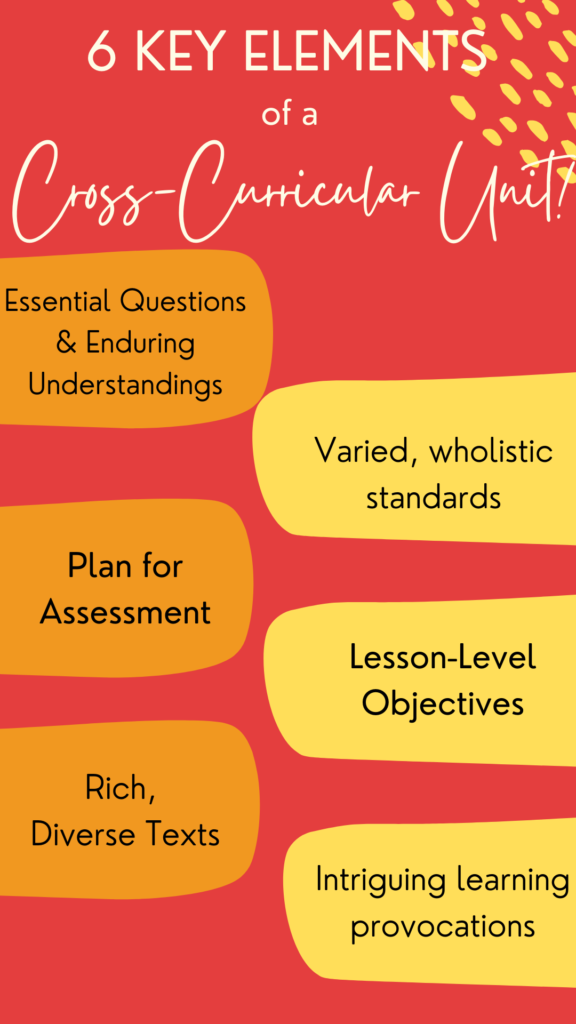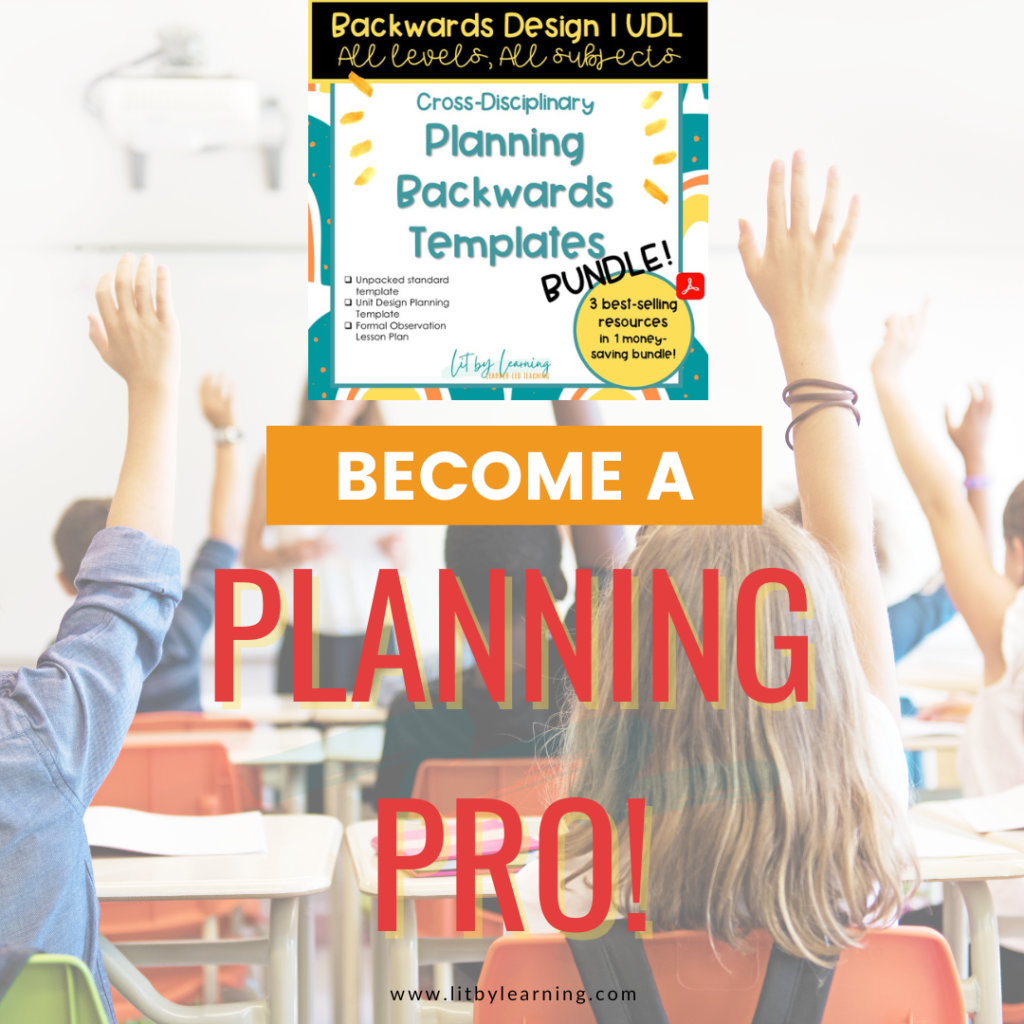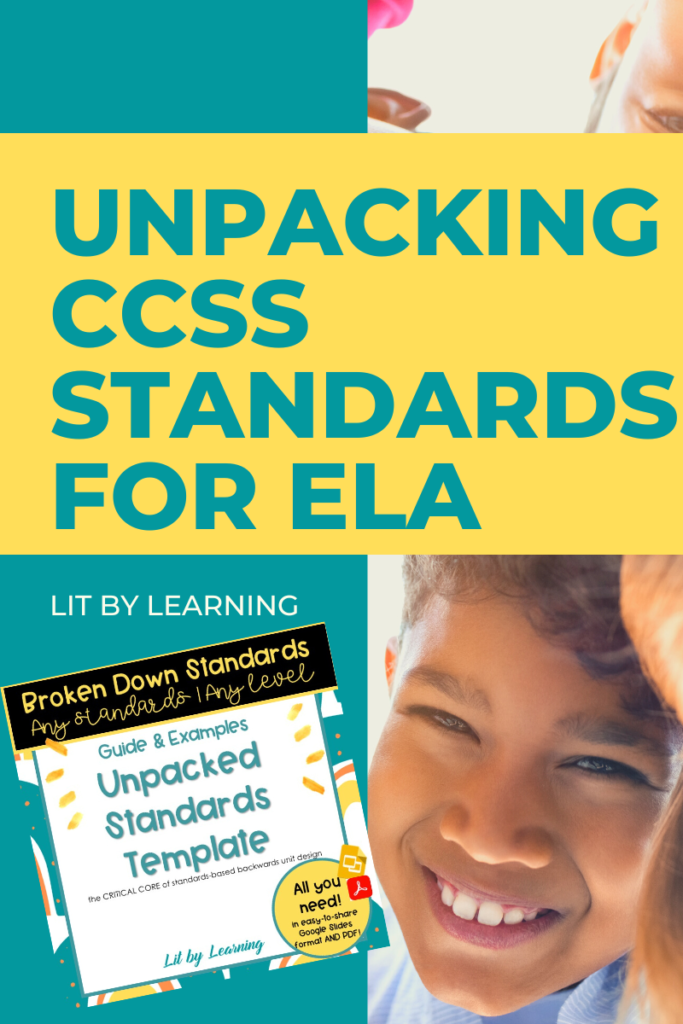Teachers: there’s no one right way to plan a cross-curricular unit. You can plan in teams or on your own, and use any planning template under the sun.
That said, all truly incredible cross-curricular units have 6 critical components in common. Read on for the recipe for a kickass cross-curricular unit plan!

Why cross-curricular unit planning in elementary?
Simply put, our brains – and the brains of the brilliant learners in front of us each day – do not contain siloes. There’s not a strictly math part or a spelling-only section. Our brains are integrated, constantly seeking to make connections! In short, our brains are cross-curricular.
Cross-curricular teaching has been proven time and time again to be integral to multilingual learners’ success in the classroom. Comprehensive units provide English Language Learners the chance to go deep on a subject and focus on core content. Similarly, cross-curricular teaching is paramount to inquiry-based learning. This student-centered teaching method invites the students themselves to direct a (cross-curricular) study.
As a bilingual teacher at an inquiry-based, International Baccalaureate School, cross-curricular instruction is the name of my game. I’ll never stop singing about its incredible value!
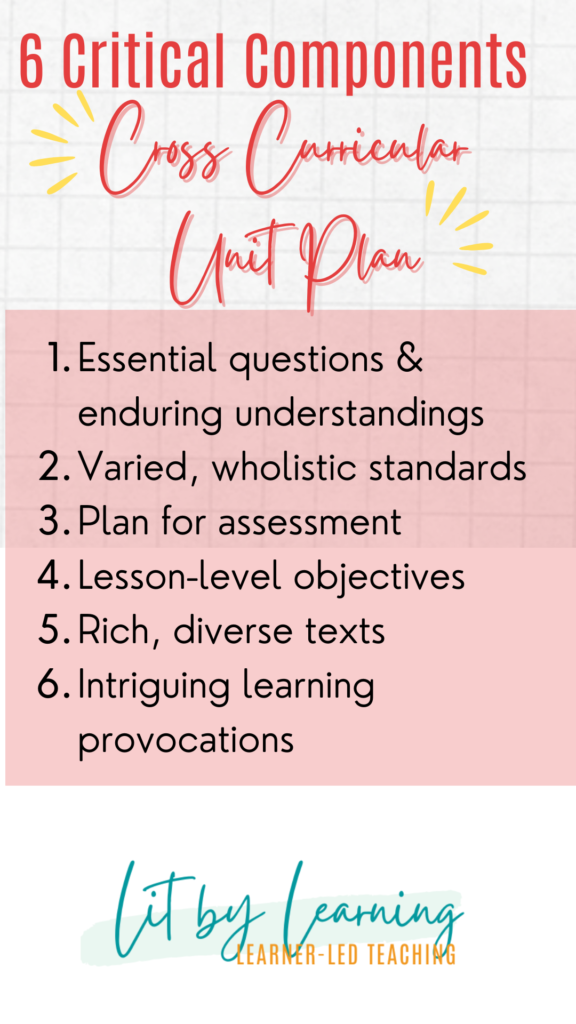
6 critical elements of a cross-curricular unit
Cross-curricular Unit Component #1 – Essential Questions & Enduring Understandings
When planning a cross-curricular unit, essential questions and essential understandings are the first key components. Let’s break down what they each are! Essential questions are thought-provoking inquiries that delve deep into the heart of the topic we’re teaching. They encourage critical thinking, curiosity, and exploration. These questions don’t have one right answer but spark discussions and investigations, fostering a love for learning.
In contrast, essential understandings are the fundamental concepts or big ideas we want our students to grasp by the end of the unit. They provide the overarching purpose for our lessons, helping students see the significance of what they’re learning. By framing our cross-curricular units with these questions and understandings, we create a roadmap for both ourselves and our students. This ensures that our teaching is purposeful, engaging, and meaningful.
Component #2 – Varied, Wholistic Standards
Right alongside essential questions and understandings come the integral component of standards. But here’s the thing: we need to choose the right standards to make a unit truly cross-curricular. Including multiple kinds of standards creates a comprehensive and well-rounded educational experience for their students.
Beyond only subject-specific standards, such as the Common Core Standards for Math or Language Arts, it’s critical to include other standards like social-emotional learning, English Language Aquisition, technology, or even cultural competency. I personally love to align with Teaching for Justice’s Social Justice Standards and the WIDA Can-Do Descriptors when planning cross-curricular units for my bilingual second graders. This holistic approach ensures that students not only acquire academic knowledge but also develop essential life skills, empathy, and an awareness of the diverse world around them. This approach also fosters creativity and critical thinking, as students connect cross-curricularly, making learning more engaging and relevant.
Cross-curricular Unit Component #3 – Plan for Assessment
Once a teacher has essential questions & standards in place, the next step is to create a plan for assessment. It serves as a roadmap to ensure that our instructional goals align with the desired outcomes. Assessment planning helps us determine what we want students to learn, how we’ll measure their progress, and what adjustments may be needed along the way. This proactive approach allows us to tailor our teaching strategies, differentiate instruction, and provide timely feedback to students. It’s not just about testing; it’s about understanding our students’ learning journey and ensuring that they are achieving the intended objectives. Assessments are valuable tools for both educators and students, enabling us to gauge mastery, address learning gaps, and celebrate achievements, making the entire teaching and learning process more effective and meaningful.
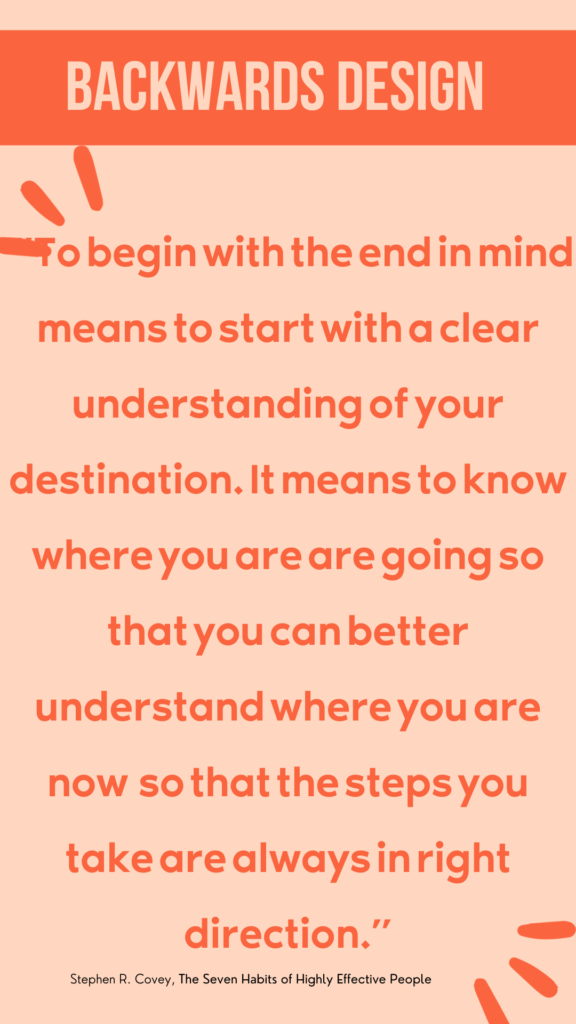
Component #4 – Lesson-level Objectives
The fourth component of a stellar cross-curricular unit plan is lesson-level objectives. These objectives, of course, come from the selected standards. Teachers need to take the standards and break them down into bite-sized lesson goals: something I call “unpacking the standards.”
By deconstructing broader standards into smaller, achievable objectives, we create a clear path for both ourselves and our young learners. This approach allows us to scaffold instruction, ensuring that students grasp the foundational concepts before moving on to more complex ones. It transforms abstract goals into tangible steps that make the learning journey more comprehensible and attainable.
Cross-curricular Unit Component #5 – Critical Texts
Our fifth cross-curricular unit planning component is high-quality texts. I am preaching to the choir here, but the texts we choose serve as the cornerstone of our students’ learning experience, shaping their understanding and appreciation of various subjects. High-quality texts engage, inspire, and challenge young minds. They introduce diverse perspectives, encourage critical thinking, and promote a love for reading. These texts also provide rich opportunities for language development and vocabulary acquisition.

By incorporating texts of high literary and informational value into our units, we not only enhance our students’ comprehension but also instill a lifelong passion for learning. Quality texts are windows to the world, fostering curiosity, empathy, and cultural awareness, making them an essential ingredient in effective teaching and learning. For some of my favorite texts, check out my book store here!
Component #6 – Interesting learning provocations
The final element of a truly kick ass cross-curricular unit plan is intriguing learning provocations. We as elementary teachers have a fantastic opportunity to ignite curiosity and enthusiasm in our students through surprising, curiosity-inducting learning provocations.
These provocations can take various forms, such as hands-on activities, intriguing questions, real-world challenges, or engaging stories. By selecting captivating and relevant provocations, we can pique students’ interest, making them eager to explore the unit’s content or to follow a new path. These transformative experiences set the tone for the entire unit, sparking curiosity and motivating students to delve deeper into the subject matter.
Engaging provocations not only make learning more enjoyable but also lay the foundation for active, student-driven inquiry, which is essential for fostering a love for learning and developing critical thinking skills.
